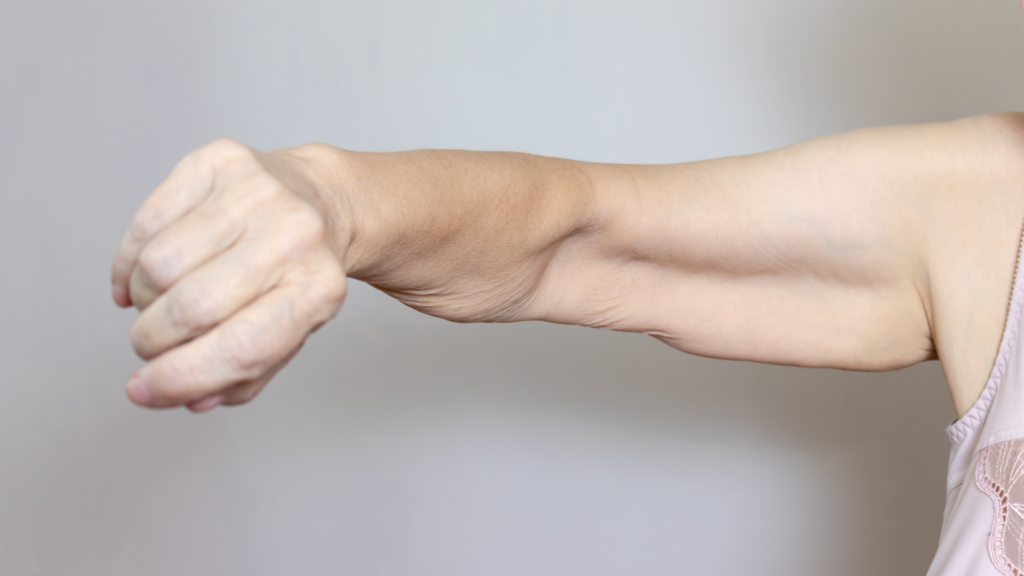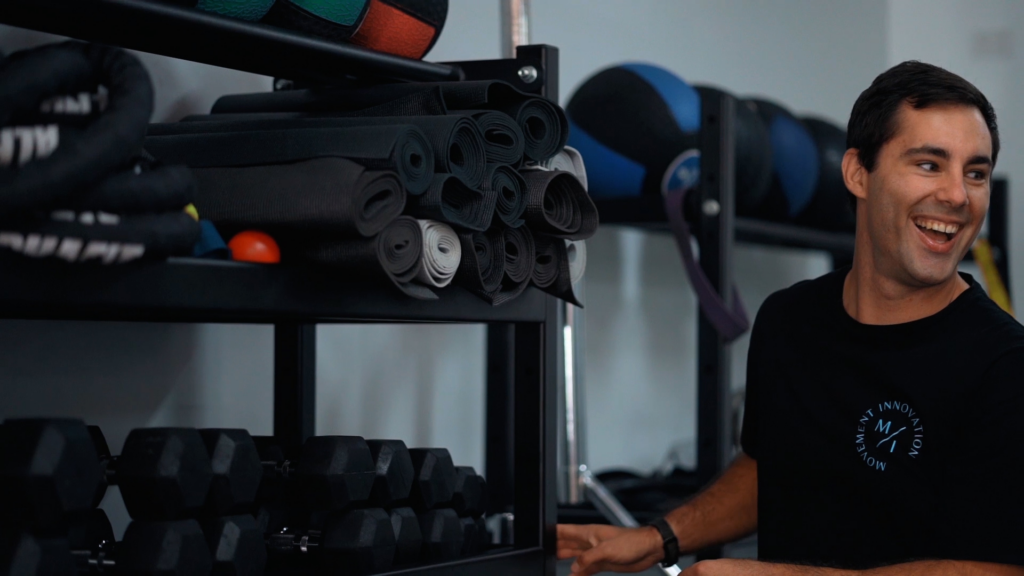If you’re over 40 and feel like losing weight isn’t as straightforward as it used to be, you’re not imagining things. Your body has changed and the same old tricks don’t work the way they used to (sorry!).
But that doesn’t mean you can’t lose fat or build strength. It just means you need to train a little differently, eat a little smarter, and give your body what it actually needs.
This blog will break down what really happens to your body after 40, why fat loss might feel harder, and what to do instead.
And don’t worry, we’re not here to tell you to cut everything out, run yourself into the ground, or follow a 30-day plan that doesn’t last. We’re here to show you how to make changes that actually stick.
So, let’s get into it!
1. Yes, your hormones are changing
After 40, your hormone levels (like estrogen, testosterone, and growth hormone) start to decline. These changes impact everything from how your body stores fat to how easily you build muscle and even how much energy you have to train.
This is a major reason why fat loss starts to feel different as you hit middle age. It’s not just your age slowing things down; it’s the combination of changes in muscle mass, hormones, and activity levels.
So, if your go-to method for fat loss used to be cardio, ditching carbs, or skipping meals, that approach probably isn’t cutting it anymore.
Instead, focus on:
– Lifting weights regularly. Strength training is essential not just for building muscle, but for maintaining it as well. It also plays a key role in keeping your metabolism active, which helps with fat loss.
– Make sure you’re eating enough protein. As you age, your body requires more protein to help preserve muscle mass and support recovery. Without adequate protein, maintaining muscle becomes more difficult, and recovery from workouts slows down.
– Prioritise rest. While it can be challenging, especially for parents, getting enough rest is crucial for balancing your hormones. Without enough sleep and recovery time, stress levels rise, progress slows down, and results start to plateau.
2. Muscle loss is real… but reversible!
There’s a name for the natural loss of muscle that happens as we get older. It’s called sarcopenia.
It usually starts around your 30s and becomes more noticeable after 40. Less muscle means your resting metabolism drops, (that’s the number of calories you burn just being alive), and when that goes down, fat loss gets tougher, even if you’re eating ‘pretty well’.
But here’s the good news: you can rebuild and maintain muscle at any age. The bad news? It won’t happen by accident.
What actually works:
– Resistance training 2-4 times a week. That can mean lifting weights, using resistance bands, or doing bodyweight exercises.
– Progressive overload. This means gradually increasing your weights or reps over time to keep challenging your muscles.
– Daily protein intake. Most people don’t eat enough protein consistently. Aim for a serving at every meal, and try to get it from whole food sources where you can.
If your training doesn’t focus on building strength, you’re probably not getting the results you’re aiming for.

3. Sleep affects everything
Sleep is one of the most overlooked parts of fat loss. Most people don’t realise how much poor sleep can mess with their hunger, recovery, and training motivation.
Here’s what happens when you’re not getting enough quality sleep:
– Cortisol increases. This is your stress hormone, and when it’s elevated for prolonged periods, it can lead to more fat being stored around your midsection.
– Cravings rise. Specifically for sugar and carbs, as your body looks for quick sources of energy to cope with the stress.
– Energy levels drop. This affects more than just your workouts, it impacts your food choices and overall mood as well.
So, what’s some simple ways to improve it?
– Go to bed and wake up at the same time each day (yes, even on weekends).
– Keep screens off for 30-60 minutes before bed.
– Stop caffeine by early afternoon.
– Try a wind-down routine, whether that’s reading, stretching, or even just sitting quietly for 10 minutes can help.
You can be doing everything right with training and food, but if you’re sleeping five hours a night, your body won’t respond the same way.
4. Stress adds up (and so does cortisol)
We usually think of stress as emotional, whether that be work, family, or just general life stuff. But physical stress counts too: training too much, sleeping too little, not eating enough, even sitting all day.
All of that stress keeps cortisol levels high. And when cortisol stays high, your body holds onto fat, recovery slows down, and energy drops.
To reduce excess stress in your life, try incorporating a few of these strategies:
– Walking outside every day, even if it’s just 10 minutes.
– Breathing exercises before bed or after a workout.
– Set limits on how much you say yes to because yes, overcommitting leads to burnout.
– Build in rest days. More isn’t always better and proper recovery lets your body actually change.
If you’re hitting every workout, tracking your food, and still feeling stuck, look at your stress load. That might be what’s holding things up.
5. NEAT: Your secret weapon
You might not have heard of NEAT, but it plays a big role in fat loss, especially after 40.
NEAT stands for Non-Exercise Activity Thermogenesis. It’s all the movement you do that’s not formal exercise: walking, standing, fidgeting, housework, yard work.
As we age, and especially with more sedentary jobs, our NEAT drops. That means our total daily energy burn drops, too. You might work out three times a week, but if you’re sitting the rest of the time, that adds up fast.
Here’s what you can do to help reach that 8,000 – 10,000 steps a day:
– Take short walks after meals.
– Stand up every hour during the day.
– Do housework, errands, or yard work more often.
These small changes might not feel like much, but they make a huge difference over time.

6. Alcohol isn’t the same anymore
If you’ve noticed alcohol hits differently than it used to, you’re right. As we age, alcohol affects recovery, sleep, hormones, and even digestion.
Even small amounts can:
– Disrupt sleep
– Slow down fat loss
– Increase cravings the next day
– Add sneaky calories that don’t fill you up
That doesn’t mean you can’t drink. But it does mean being honest about how often and how much you’re having.
A better approach would be:
– Choose when it’s worth it, and skip when it’s not.
– Drink slowly and mindfully.
– Try alcohol-free nights during the week.
– Track how you feel the day after drinking and adjust from there.
7. Maintenance is the real goal
You’ve probably noticed it yourself, losing weight isn’t the hard part; keeping it off is.
What usually happens is you follow a strict plan, shed the weight, and reach your goal. But then life gets busy, and you stop tracking as closely. Slowly, old habits creep back in, and before you know it, the weight comes back – sometimes more than before.
This is why the real challenge isn’t losing weight, it’s maintaining it.
From the start, your plan should be something you can sustain long-term. Not perfectly, but consistently.
So, what helps with long-term maintenance? Even after reaching your goal, it’s important to continue with strength training, keep up your step count, maintain your protein intake, and manage stress where possible. And of course, flexibility is key. Life will always throw curveballs, so your habits need to be adaptable to stay on track.
You’re not out of time!
So, there you have it. Losing fat after 40 isn’t impossible, it’s just different. The crash diets, endless cardio, or skipping meals you might’ve relied on in the past? They’re less effective now, and they don’t hold up over time anyway.
The better approach is to start small. Focus on one area, build consistency, and layer on from there. It doesn’t have to be perfect, it just has to be something you can stick to.
You’re not behind, you’re not out of time, you’ve just got to approach it with the right tools and give it time to work.
If you’re looking for a supportive community to help you along your journey, we’d love for you to join us at Movement Innovation, where you’ll work toward your personal goals in a positive, group-focused environment.
Written by Luke Nivison-Smith, the founder of Movement Innovation, with over 13 years of personal training experience.

